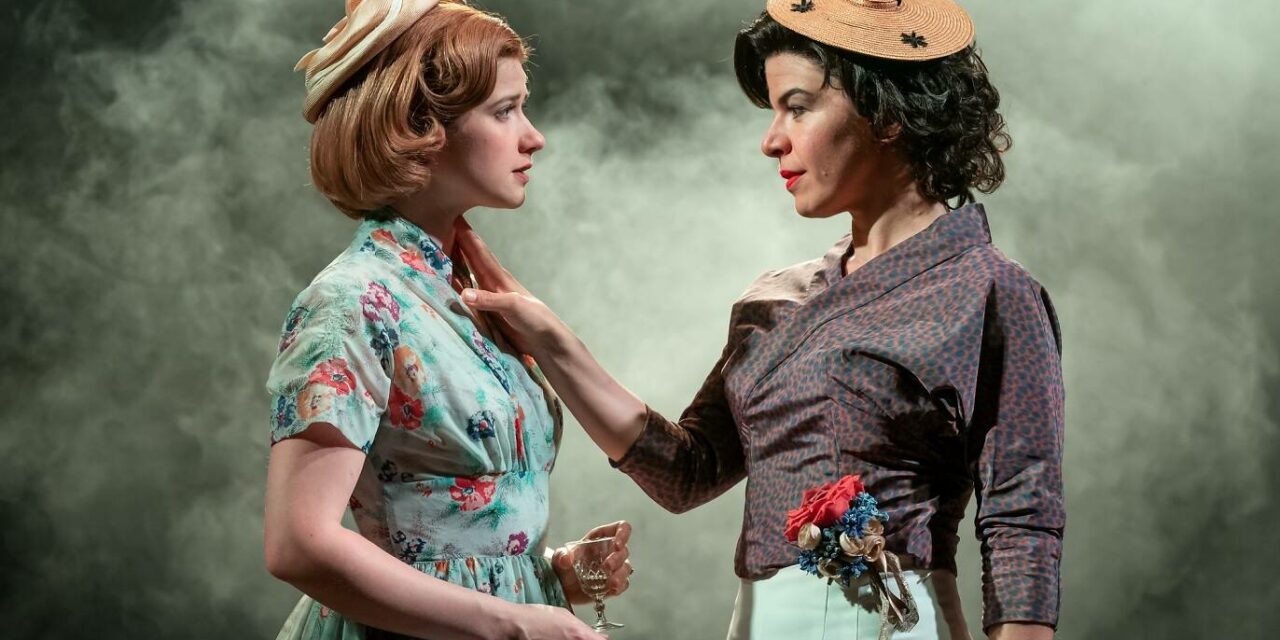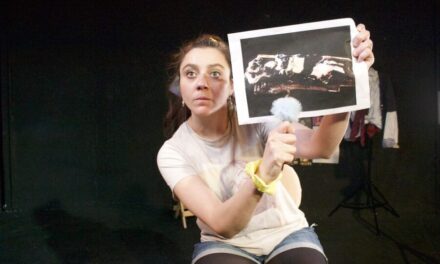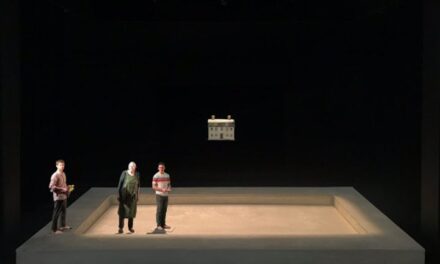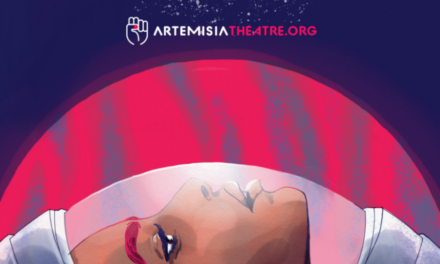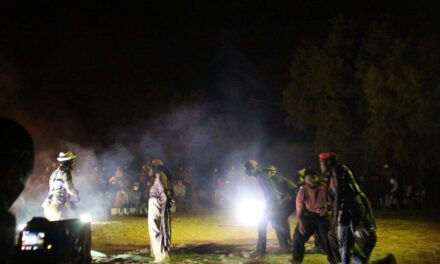Many a dramatist has imagined what happens to Nora after she slams the door at the end of Ibsen’s A Doll’s House. That is not what Samuel Adamson does in his new play Wife, but he is similarly invested in that resonant moment. Wife asks, repeatedly but dynamically, what happens to those who play Nora on stage, and to those who watch her from the stalls, after the curtain falls. Boasting a structure that is at once well-crafted and unpredictable, Adamson’s play takes us through the immediate aftermaths of four London productions of A Doll’s House—set in 1959, 1988, 2019, and 2042—which build on one another in complex but mostly elegant ways, much in the manner of nesting dolls.
Adamson is preoccupied with the play’s implications for gay and lesbian individuals as they are embedded in—and revolt against—changing milieus of oppression and liberation. What may, for example, Nora’s infamous exit signify for a closeted spectator? What does it mean to embody Nora on stage without actually believing in the transformative power of theatre? How do our evolving stage interpretations of Ibsen’s play unearth or efface what some may claim to be a set of outmoded concerns, especially in the wake of multiple waves of feminism? These are just a few of the questions that animate Adamson’s packed but patient plotting, and each of the play’s four strands picks them up in different shades and against distinct backdrops.
Our journey through these four stagings of A Doll’s House—ranging from purist, seemingly tame productions to abstracted and even deconstructive takes—sets store by a good deal of theatrical reflexivity, which reaches its punchy crescendo right before the play’s intermission, as we are thrust into the 2019 production, which turns out to take place at Kiln Theatre. Indeed, there is a strong sense in which Wife treats A Doll’s House partly as a shorthand for theatre in general, interrogating the art form’s social and political potentialities beyond the borders of Ibsen’s classic. Richard Kent’s bare-bones design, which makes much out of a handful of set-pieces, and Indhu Rubasingham’s highly contoured direction frequently draw attention to our locatedness in an auditorium, foregrounding the play’s nature as an inquisitive ode to the theatre.
Yet despite Adamson’s neat plotting, the discrete parts of Wife are not consistently strong. Though full of potential, the first act is by far the weakest: taking place in the dressing room of the 1959 production, it shows the consequential tapering of an affair between a married woman and the actress who plays Nora, but the limp dialogue and the high-strung acting prevent the scene’s dramatic and lyric energies from flourishing. The performances are so odd that one cannot help but wonder if this act will soon turn out to be a nested play within the larger play. The second act, featuring two gay men whose wildly differing attitudes towards their sexual identities end up overwhelming their love for each other, is more refined in the questions it asks and the answers it ponders. But it is for the third act that the play saves its best: set in 2019, this emotionally dense and deeply confrontational act hinges on an encounter between a straight woman and a gay man who was, decades ago, her father’s lover (both of whom, as it turns out, we saw in the previous act). What ultimately becomes a fiery debate between these two characters has at its root the question of whether progress in LGBTQ rights might have led to psychological and social inertia, bordering on facile contentment, when there is so much more to be done. The play never quite recovers the intelligence and the intensity it exudes in this portion, as the concluding scenes are slightly glib in their prioritization of formal tidiness over meditative daring.
This multi-layered and demanding play is powered by a fine ensemble with piercing talent: Karen Fishwick is at her very best in the third act, where her angry Daisy delivers an impressive takedown of Ivar’s smug facade. Calam Lynch is astounding both as the deeply insecure but passionate Eric, and as the self-absorbed diva Cas. Joshua James similarly gives razor-sharp performances in all three of his characters, though his take on Finn goes overboard at times. There is an inherent beauty to seeing this small and adaptable cast tackle an ever-growing set of characters, especially as they are bound to each other by ties of biology and affect despite the passage of time.
In spite of its dramaturgical weak spots and occasional lapses in performance, Wife is an impressive work full of reflective (and reflexive) energy. It is certainly much more satisfying than a simple re-write or sequel of A Doll’s House, and in refusing to go down either of those roads, it finds its own admirable way to celebrate and question what it deems to be a play full of interminable relevance and power, both today and tomorrow.
This post was written by the author in their personal capacity.The opinions expressed in this article are the author’s own and do not reflect the view of The Theatre Times, their staff or collaborators.
This post was written by Mert Dilek.
The views expressed here belong to the author and do not necessarily reflect our views and opinions.

